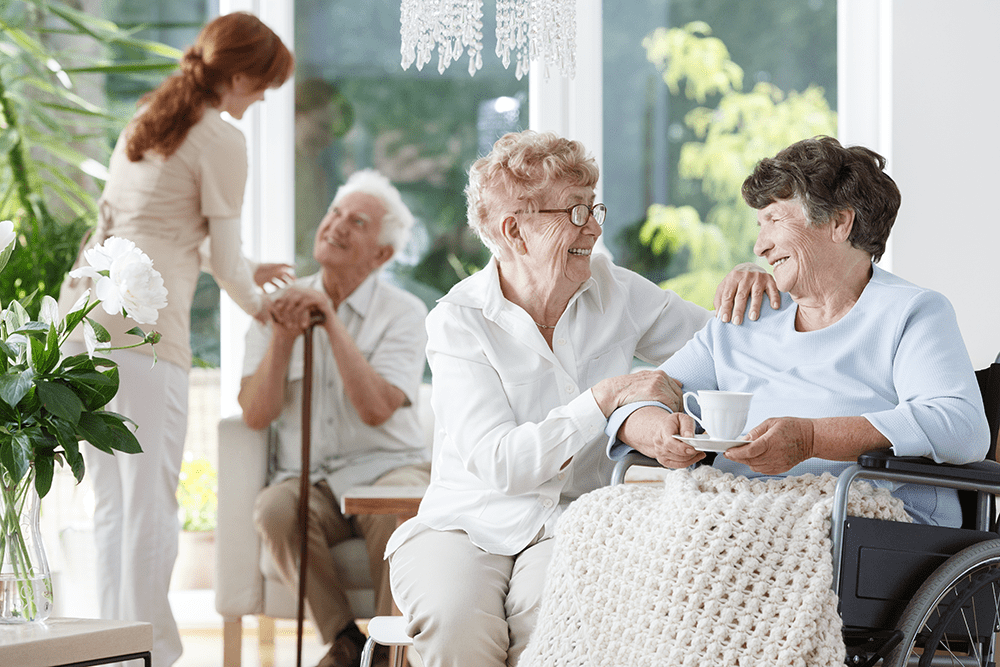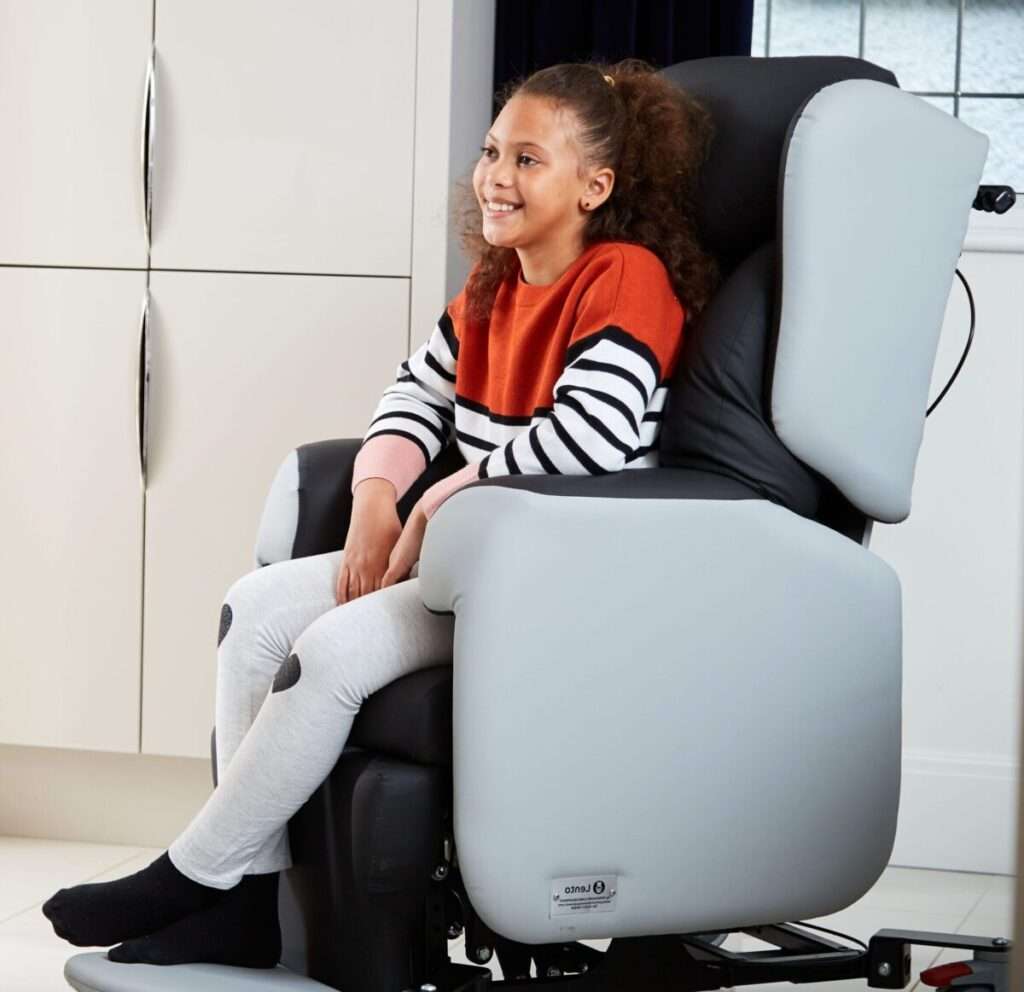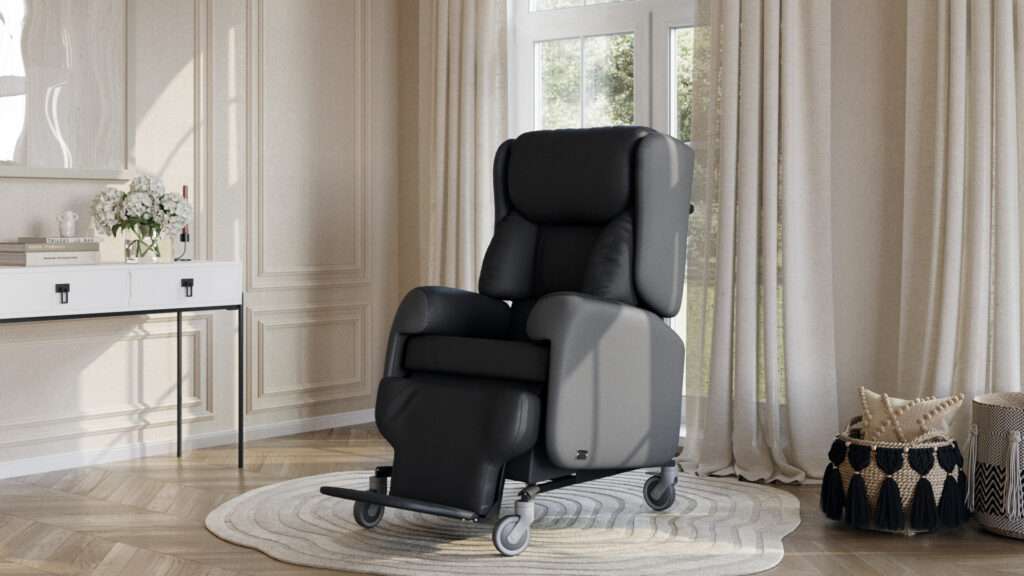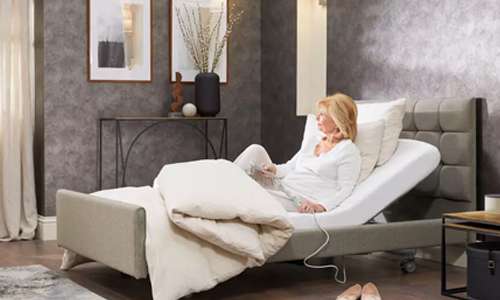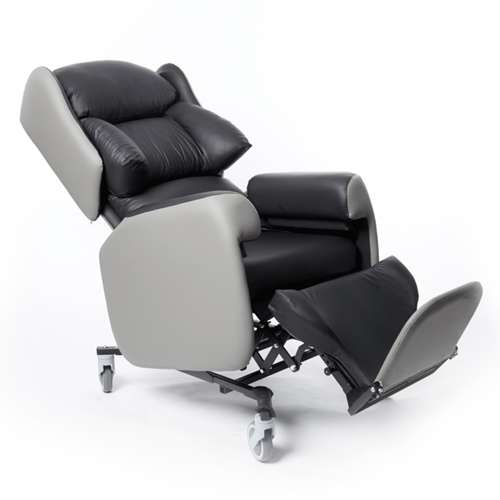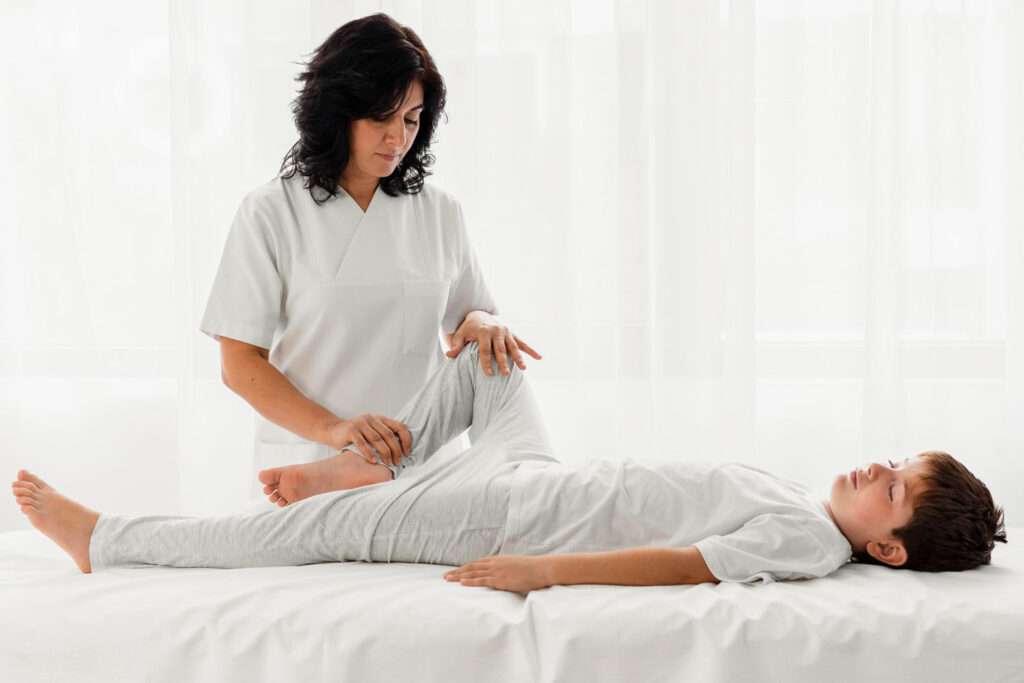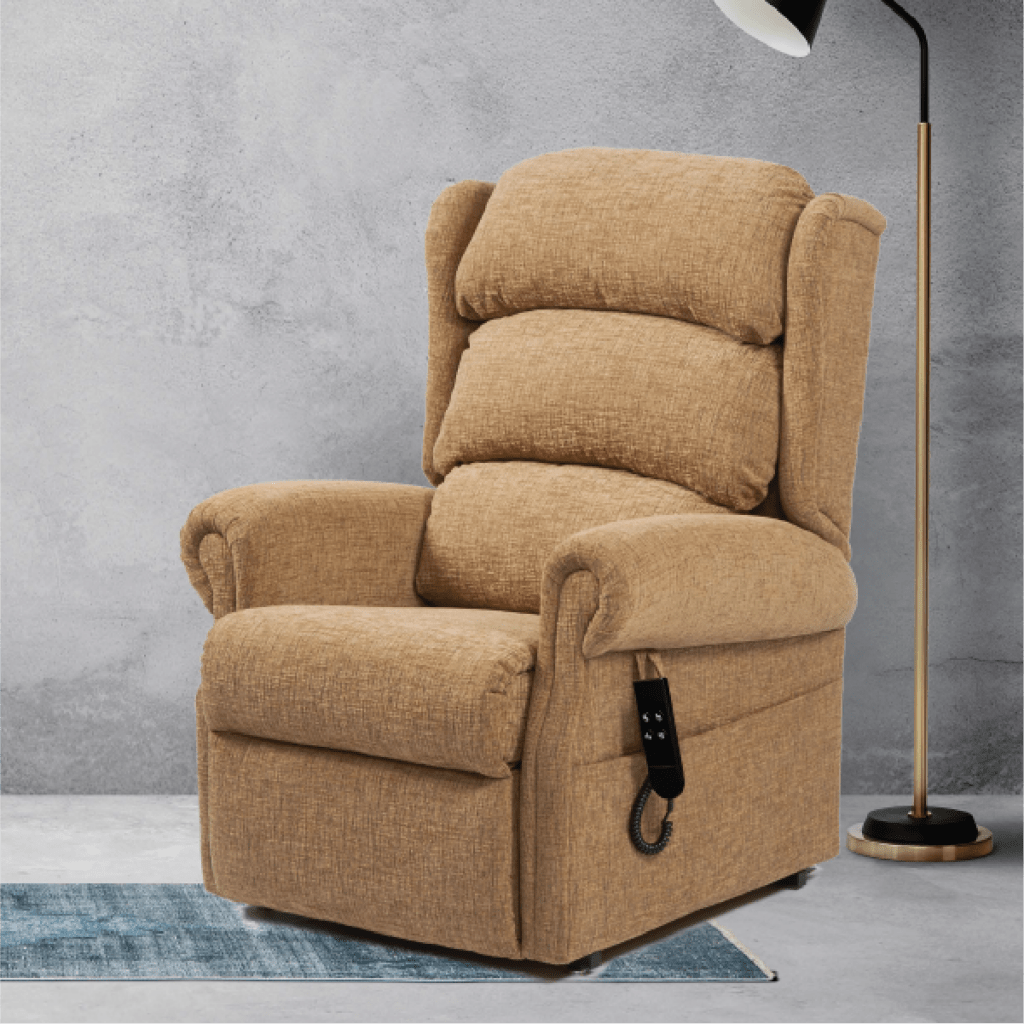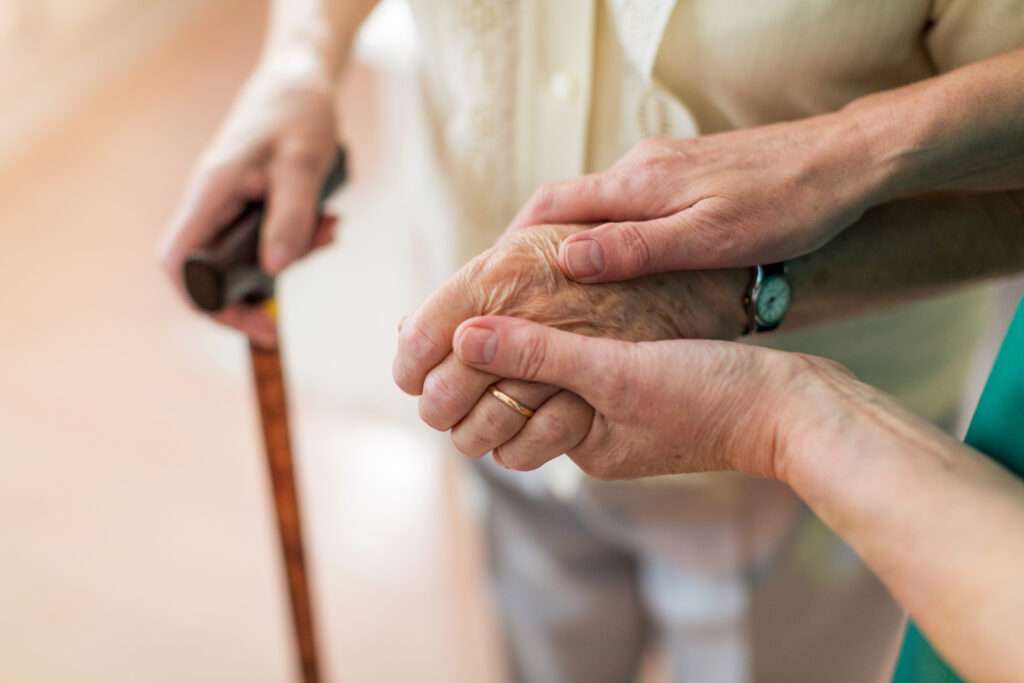The UK population is ageing, in the 2021 census, over 11 million people (18.6% of the total population) were aged 65 years or older, compared to 16.4% in 2011.
The increasing age of the population means that more people will require some form of care during their lives. This could require the level of required care to become more intensive, as the oldest old (those aged 85 and over) are more vulnerable to conditions requiring high levels of support and care.
From 1 March 2022 to 28 February 2023, there were an estimated 372,035 care home residents in England. Care home residents rely on the care home staff to provide care and support so that they can live their lives while having as much independence as possible.
Care homes can look after a range of residents with varying ranges of mobility and providing care to some low mobility residents will require manual and handling for carers. For care home residents and over 65s generally, falls are a particular concern, the highest risk of falls is in people aged 65 and over.
Jump straight to...
- Falls in UK Care Homes:
- Falls in UK Care Homes — Figures & Statistics
- Importance of Risk Assessments
- What is a Multifactorial Risk Assessment
- Who Can Conduct a Multifactorial Risk Assessment:
- Emergency Hospital Admissions For Care Home Residents:
- What to Do When Someone Falls in a Care Home
- What is Moving and Handling In Care Homes
- When is Moving and Handling Equipment Needed in Care Homes?
- Types of Moving and Handling Equipment Used in Care Homes
- Summary
Falls in UK Care Homes:
People living in care homes are 3 times more likely to fall than those living at home. Care home residents also tend to be older, more frail, and more likely to have reduced mobility than people living in the general community.
This group is especially vulnerable to the impact of falls and around half of people aged 80 and over, fall at least once a year. This has created a current situation where 40% of hospital admissions from care homes follow a fall.
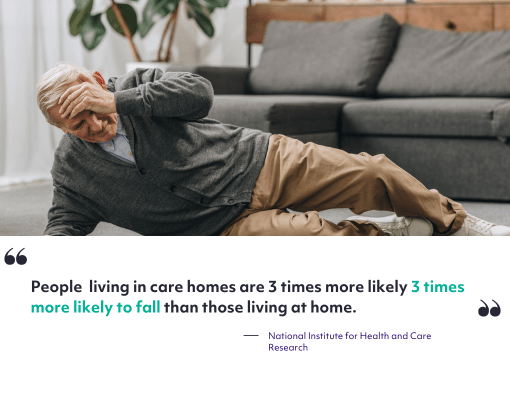
A fear of falls among the elderly exists for several reasons, one is that falls are a major cause of emergency hospital admissions for older people, and lead to many moving from home into residential care. Adults older than 60 years of age suffer the greatest number of fatal falls.
Another is that falls can often result in fractures, around 5% of falls lead to a fracture. Recovering after an injury is often a very long and time-consuming process, which is particularly true for adults ages 65+. It can often take months until they fully recover, and they may not ever return to full strength.
Hip fracture patients usually spend around 1 to 4 weeks in hospital, however, the Health Foundation notes that “some fractures may be avoidable with appropriate risk assessment and falls prevention”.
Falls in Care Homes — Figures & Statistics:
- People living in care homes are 3 times more likely to fall than those living at home.
- 1 in 2 of those over 80 years fall at least once per year.
- Falls are the most common cause of emergency hospital admission among the elderly.
- 40% of hospital admissions from care homes follow a fall.
With the adverse consequences of falls among the elderly known, fear of falling can seriously affect an aging adult’s quality of life and can keep a person from being active even within the care home environment.
However, falls are not an inevitable part of ageing and can be prevented with the correct steps and mitigations.
In a best practice resource published for healthcare professionals involved in caring for elderly patients at risk of falling, the Care Inspectorate and NHS Scotland note that “the risk of falling can never be removed, but by carrying out a multifactorial risk screen (MFRS) risk factors can be identified, and action taken to remove risk where possible.”
The same document goes on to advise that “considering environmental risks within the care home is part of this process”.
The Importance of Risk Assessment in Preventing Falls:
This kind of falls risk assessment is hugely important as it can reduce the risk of an elderly person falling and dealing with the multitude of health and social complications that a fall can bring about.
From fractures and impact injuries resulting from a bad fall to long periods of time spend lying on the floor waiting for ambulance conveyance for a non-injurious fall; these assessments can help identify specific areas of risk and provide guidance on interventions to reduce the risk of falling and dealing with those circumstances.
Falls and subsequent potential fractures in older people are often preventable. Reducing falls and fractures is important for maintaining the health, wellbeing, and independence of older people. This is why an appropriate falls risk assessment is essential for healthcare professionals who care for older adults who are at risk of falling.
NHS England note that a fall is ultimately “the result of the interplay of multiple risk factors”. Therefore, a falls risk assessment should consider all potential factors that may increase the chances of a care home resident falling.
In their 2004 guidance, The National Institute for Health and Care Excellence (NICE)state that “older people who present for medical attention because of a fall, or report recurrent falls in the past year, or demonstrate abnormalities of gait and/or balance should be offered a multifactorial falls risk assessment.
“This assessment should be performed by a healthcare professional with appropriate skills and experience, normally in the setting of a specialist falls service. This assessment should be part of an individualised, multifactorial intervention.”
What is a Multifactorial Risk Assessment for Falls Prevention:
NICE note that “there are over risk factors associated with falling, and the risk of falling appears to increase with the number of risk factors” and recommend that “older people at risk of falling are offered a multifactorial falls risk assessment”.
A multifactorial risk assessment is an approach to identify and address multiple risk factors that contribute to falls. This type of assessment considers a range of factors that can increase the likelihood of falls, including environmental, medical, and behavioural factors. The goal of a multifactorial risk assessment is to develop a tailored plan for everyone that addresses the specific factors that are contributing to their risk of falls.
The first step in a multifactorial risk assessment is to conduct a comprehensive evaluation of the potential faller’s health and functional status. This may include a review of their medical history, medication use, and physical and cognitive functioning. The evaluation may also include an assessment of the individual’s living environment, including their home and community environment.
Who Can Conduct a Multifactorial Risk Assessment:
A multifactorial risk assessment is often carried out by a specialist falls service, but they can also be can also be undertaken in other settings that have appropriate governance arrangements and professionals with skills and experience in falls prevention.
For example, in 2019, the NHS published its 10-year long-term plan, one of the aims of this framework is to reduce emergency department admissions for elderly people from care homes by creating stronger links between care homes and primary care services and offering more support by a consistent team of health professionals.
This means that in the UK, there are increasing numbers of healthcare professionals and community-based falls prevention/response teams. Professionals who may be well-placed to conduct or offer advice on falls risk assessments may include:
Emergency Admissions Among Care Home Residents:
Falls, both where the faller has sustained an injury and non-injurious falls are usually taken from the site of the fall to a hospital emergency room where the fallen person can be assessed for injury.
Emergency admissions usually occur via A&E departments but can also occur directly via GPs or consultants in ambulatory clinics.
- Half (49%) of all the people arriving in A&E by ambulance are over 65.
- A third (36%) of all the people arriving in A&E by ambulance are over 75.
NICE go on to recommend that “this assessment should form part of an individualised multifactorial intervention to prevent further falls”.
It is important that a multifactorial risk assessment recognises the largest potential risk factors for a person. With over 400 identified risk factors associated with falling, it is difficult to create a falls intervention plan that completely negates all risk of a fall for an elderly or reduced mobility individual, some components of a multifactorial risk assessment that should be considered include the following:
Individual components of the assessment may be undertaken by different healthcare professionals, but each element must be combined to form a single multifactorial assessment.
What to do when a person falls in a Care Home:
In these situations, it is important that moving and handling tasks are performed correctly to avoid causing injury or distress to residents and/or carers.
Along with ensuring that moving and handling equipment is properly stored and regularly serviced, it is also paramount that carers are provided with appropriate moving and handling training specific for carers. Regular servicing of lifting equipment used in a care home ensures that the manual handling or lifting equipment is in the proper working condition and that both carers and residents are protected from injury.
Below, we take a closer look at the types of manual handling and lifting equipment used in care homes, the relevant legislation governing the provision and maintenance of this equipment.
What is moving and handling in Care Homes?
As mentioned above, care home residents with reduced mobility may require manual handling on occasion. While there are manual handling techniques for carers to make use of, in care homes, lifting equipment is used to assist with transferring residents with mobility difficulties.
Manual handling in healthcare can be dangerous with risks not only to the carer and resident, but there is also the potential to damage fragile skin, cause bruising, breathing difficulties, pain and the intimate process can remove the dignity of a care home resident.
It is not recommended that staff in a care home regularly perform manual lifts on a resident. Instead, it is recommended that hoists, sliding aids, electric profiling beds and other specialist moving and handling equipment are used as substitutes for manual lifting.
The physical manual handling of care home residents should only continue in cases which do not involve lifting most or all of a resident’s weight.
When Is Moving and Handling Needed in Care Homes?
A carer may be required to engage in manual handling tasks to aid with day to day activities for a low mobility resident, these situations can range from:
- Lifting a fallen resident from the floor
- Bed to chair transfers (this can be a care chair or a wheelchair)
- Lateral transfers
- Toileting/bathing & personal hygiene care
- Repositioning, turning and pressure injury management.
What Types of Moving and Handling Equipment are Used in Care Homes?
Depending on the manual handling task required, there is a range of manual handling and lifting equipment that carers can use for the moving and handling of care home residents.
Remember, there is no requirement that a carer perform any manual handling tasks that unreasonably put them and their clients at risk. Client autonomy and dignity must be supported as much as possible, and a patient-centred care plan should include information on potential moving and handling risks.
Some common types of lifting equipment used in care homes include:
- Patient lifts: These are devices used to transfer residents from one surface to another, such as from a bed to a wheelchair. They come in various forms, patient lifts can either pick up and transfer a patient, or they can lift-up a patient and transfer them to the desired surface.
Types of patient lifts used in care homes:
- Overhead patient lifts — These lifting aids can be affixed above a bed or a chair.
- Flat/Lateral patient lifts — These aids can lift someone from the floor and transfer then to a bed or other flat surface.
Note on patient lifts: If used incorrectly, patient falls from these manual handling devices can result in very severe patient injury. If you provide lifting equipment to carers, it is your duty to ensure that appropriate and up to date information and moving and handling training for carers is provided.
- Slings: Slings are used in conjunction with patient lifts to support and secure the resident during the transfer. There are several types of slings available, including full-body slings, seating slings, and standing slings.
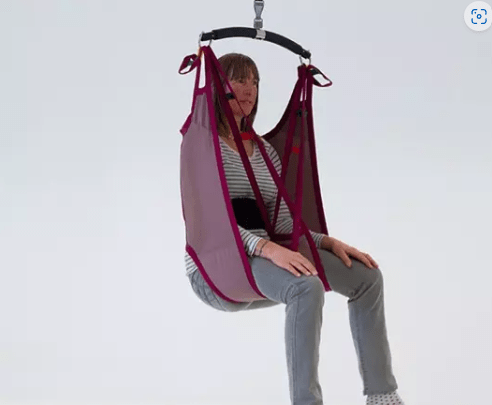
Note on patient slings: Severe patient injury is possible if slings are used incorrectly, not all slings are compatible with all patient lift devices, it is important that you use all slings in conjunction with patient lifts as specified by the equipment manufacturer.
- Hoists: Hoists are like patient lifts but are designed for larger, more complex transfers, such as from a bed to a bath or shower. Available as static hoists, or mobile hoists, these lifting aids often have large lifting capacities.
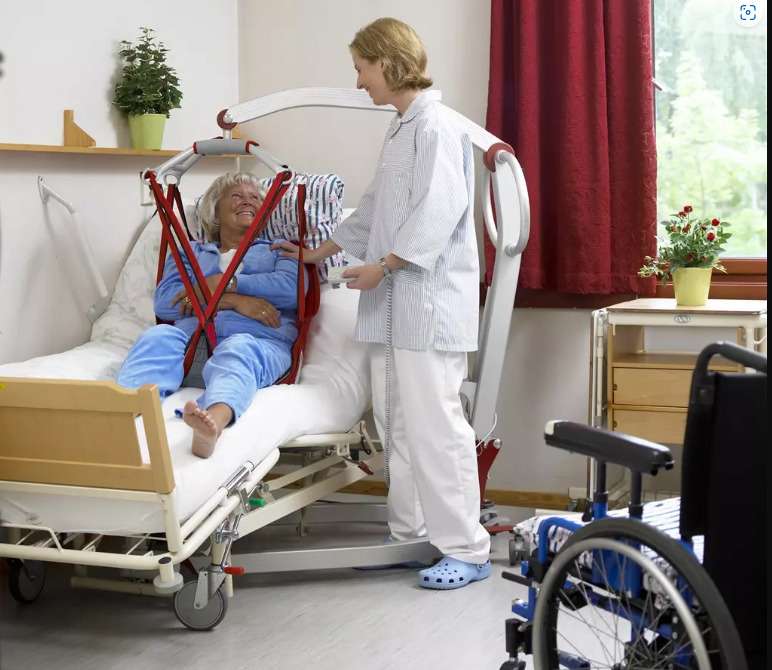
Note on patient hoists: Many care homes find that a mobile patient hoist is the ideal way list and transfer patients. Mobile hoists are easily portable thanks to the handy and durable wheels on the bottom, allowing mobile hoists to perform a patient lift wherever required.
Mobile hoists are also built with a reasonably large weight limit that allows them to cater to a range of residents.
For even more manoeuvrability, compact patient hoists are available, there is a trade-off that means the smaller size comes with a lower lifting capacity. It is important to find the ideal mobile hoist for a care home resident(s) specific need.
Lifting Cushions & Inflatable Lifting Equipment: These types of lifting aid are used to pick up a fallen person from the ground.
Pros of inflatable cushions:
- Can be used across a range of surfaces, indoors or outdoors.
- Inflatable lift with backrest brings fallers to a seated position.
- Large weight capacity — Some inflatable lifting aids can support up to 450kg (70 stone)
Cons of inflatable cushions:
- This lifting aid can take some time to fully inflate.
- Lifting cushions can feel unstable while they are inflating.
- Designed to respond to non-injurious falls only.
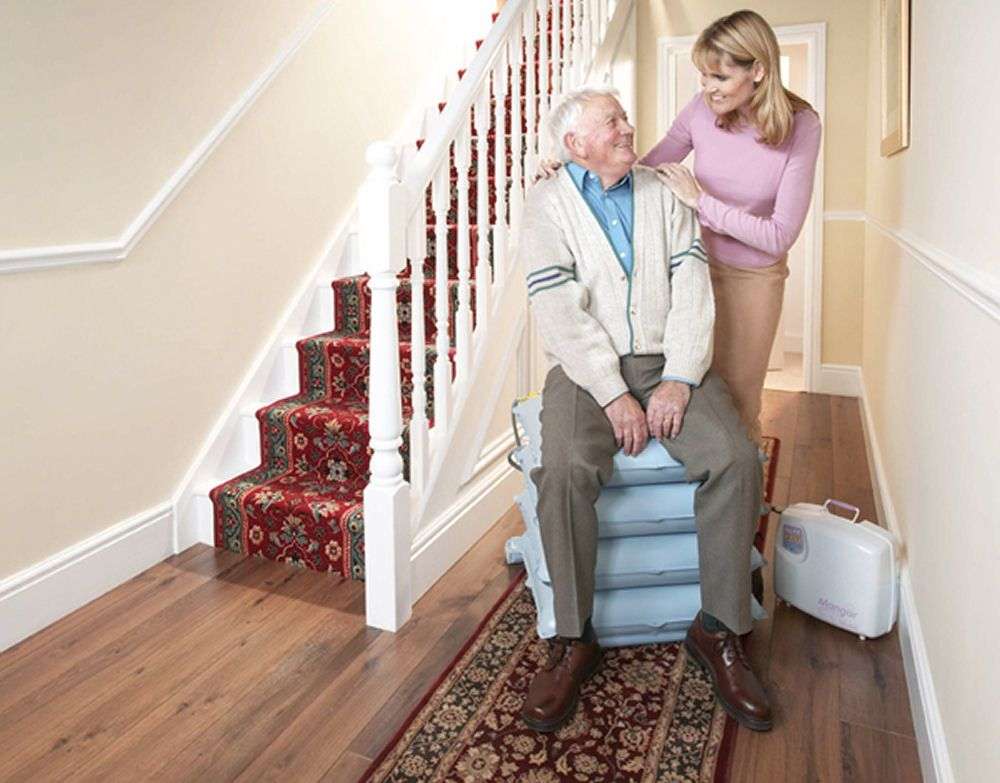
Inflatable lifting equipment such as the Hover Jack & Flo Jack, is used to respond to falls and to evacuate patients from buildings. Their extra durable material and straps allow them to be pulled down a set of stairs. These lifting aids are designed with massive weight capacities and can hold up to 544kg (85 stone).
Pros of inflatable lifting equipment:
- Can be used across a range of surfaces, indoor or outdoors.
- Inflatable lift with backrest brings fallers to a seated position.
- Can be used as an evacuation aid and slid down a set of stairs when needed.
- Large weight capacity means they can lift bariatric patients
Cons of inflatable lifting equipment:
- These cushions can feel unstable while they are inflating.
- This lifting aid is designed for non-injurious falls only.
- Lifting Chairs: A newer way to respond to non-injurious falls, lifting chairs such as the Raizer Lifting Chair are assembled around a fallen resident, then a stable motorised chair lift brings the fallen person back to a seated position. Used in care homes, hospital inpatient wards and in urgent community care teams across the UK, the Raizer lifting chairs are a time saving and cost-effective way to respond to non-injurious falls.
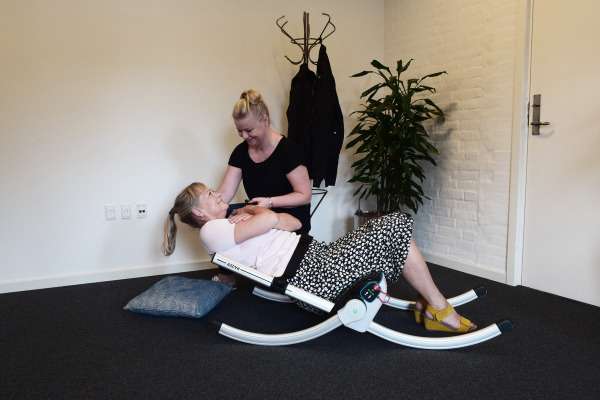
Pros of a lifting chair:
- Can be assembled and begin lifting within a minute.
- Enables single handed care
- Can be used in narrow — the Raizer Lifting Chairs are just 55cm (22 ins) in width
- The Raizer 2 lifting chair provides an electric patient lift into a sitting position.
- Also available as a more cost-effective manual version operated by a turn handle.
Cons of a lifting chair:
- This chair lift design is intended to only respond to non-injurious falls.
- A stable, flat surface is required for the Raizer lifting chair to work best.
- The Raizer lifting chair has a maximum weight limit of 150 kg (23.6 stone)
Summary
There are various ways that care homes perform daily moving and handling of residents, from patient lifts that can come in static and mobile versions, to hoists, slings and slide sheets. These manual handling aids assist with the moving and handling of residents and enable easier, safer and more dignified care to be provided to a care home resident.
There are also multiple ways for a care home employee to respond to a non-injured fallen person. From inflatable cushions to electric lifting chairs that provide a motorised and stable lift, the right lifting aid for use in a care home very much depends on a variety of factors including the regularity which the falls response aid will be used, the weight of the patients that will is being lifted and whether the fallen person is injured or not.
Safety Notice: It is important to note that all lifting equipment must be properly maintained and inspected to ensure the safety of residents and care staff. Care homes should follow all relevant regulations and guidelines, and carers should receive training on how to use the equipment safely and effectively.





